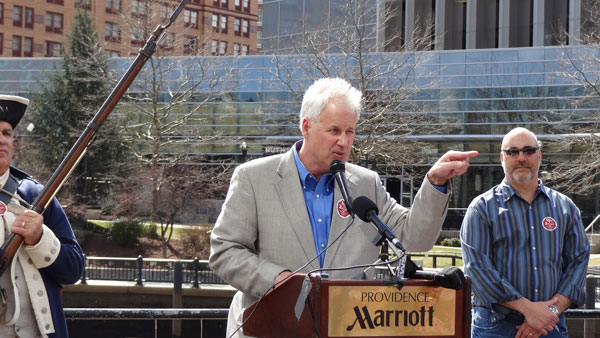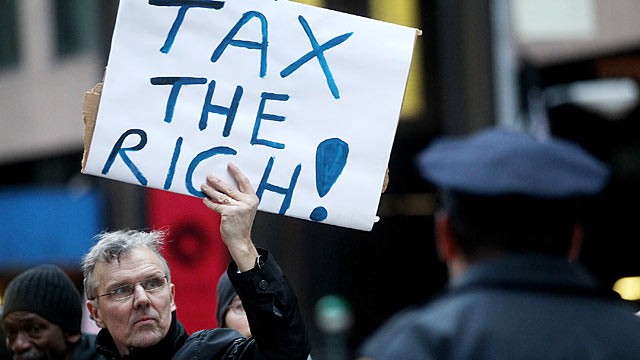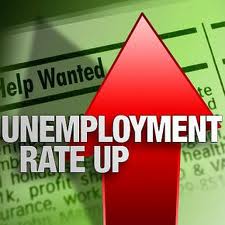About RI-STAMP
RI-STAMP (State Tax Analysis and Modeling Program) was developed by the Beacon Hill Institute and was customized for the state of Rhode Island for the exclusive use by the RI Center for Freedom and Prosperity. Various versions of STAMP have been successfully utilized throughout the country as a credible predictor of the effects of tax policy on a state’s (or city’s) economy.
Accuracy
Massachusetts STAMP
In May of 2009, the Beacon Hill Institute used its STAMP model to estimate that the proposed increase in the Massachusetts sales tax from 5.0% to 6.25% would increase sales tax revenue by $1.038 billion annually. The sales tax increase was implemented on August 1, 2009. The state collected $950 million in additional revenue in the first 12 months that the measure was in place. However, during the prior 12 months sales tax revenue was down $220 million from the previous year due to the recession. BHI used a logarithmic trend to estimate that sales tax revenue would have been down by an additional $140 million in the year to July 31, 2010. Thus we estimate that the sales tax increase actually generated $1.09 billion in that period. Thus the STAMP model projection was off by only 5.5% from the actual revenue change.
New York STAMP
STAMP has a strong reputation for accuracy. A quote from a March 14, 2003 article in The New York Sun illustrates the predictive accuracy of STAMP. In discussing the Manhattan Institute’s analysis of a property tax increase, the article states:
A fiscal policy analyst at the Manhattan Institute, E.J. McMahon, estimated that it would cost the city 62,000 jobs. He made his estimate based on the State Tax Analysis Modeling Program, which models interaction between economic and tax variables using historical data. It seems that the mayor’s own Office of Management and Budget may have reached similar conclusions to Mr. McMahon’s: Between the mayor’s November financial plan and the January adjustment – i.e. before and after the property tax increase – the administration has revised downward its estimate of the number of jobs in New York City in 2003 by 63,000.
Thus, as predicted by STAMP, the tax increase did cost the city approximately 62,000 jobs.
Effectiveness
Since 1991, BHI has constructed STAMP® models for 25 states and three local areas, including New York City. Over the past decade, researchers armed with STAMP® models have successfully fought back tax increases and advocated tax cuts. Here is a partial list of those efforts:
• Massachusetts, 2000. Voters rejected a graduated income tax.
• New Hampshire, 2001. The legislature rejected a proposal to introduce a sales tax.
• Florida, 2002. The legislature rejected an expansion of the sales tax.
• Alabama, 2003. Voters turned down a tax increase.
• Texas, 2005. The legislature rejected a payroll tax.
• Iowa, 2006. The legislature passed a bill to exclude the income tax for elderly taxpayers.
• Michigan, 2007. The legislature vote for and then repeal an expansion of the sales tax.
• Oregon, 2009. The legislature rejected a cap-and-trade regime for greenhouse gases.
• Washington, 2010. Voters reject the imposition of a state income tax.
Background: CGE MODELS
A computable general equilibrium (CGE) tax model is a computerized method of accounting for the economic effects of tax policy changes. A CGE model is specified in terms of supply and demand for each economic variable included in the model, where the quantity supplied or demanded of each variable depends on the price of each variable. Tax policy changes are shown to affect economic activity through their effects on the prices of outputs and of the factors of production (principally, labor and capital) that enter into those outputs.
A CGE model is in “equilibrium,” in the sense that supply is assumed to equal demand for the individual markets in the model. For this to be true, prices are allowed to adjust within the model (i.e., they are “endogenous”). For instance, if the demand for labor rises, while the supply remains unchanged, then the wage rate must rise to bring the labor market into equilibrium. A CGE model quantifies this effect.
Finally, a CGE model is numerically specified (“computable”), which is to say it incorporates parameters that are believed to be descriptive of the actual relationships between quantities and prices. It produces estimates of changes in quantities (such as employment, the capital stock, gross state product and personal consumption expenditures) that result from changes in prices (such as the price of labor or the cost of capital) that result from changes in tax policy (such as the substitution of an income tax for a sales tax).
Because it consists of a large number of interrelated equations STAMP requires the development and application of a sophisticated computer program for the solution of its equations.
About The Beacon Hill Institute:
The Beacon Hill Institute (BHI) is an independent, nonpartisan economic research organization located in the Department of Economics at Suffolk University in Boston, Massachusetts. Articles and references to BHI’s work have appeared in leading publications, including the Boston Globe, Wall Street Journal, Los Angeles Times Magazine, U.S. News & World Report, State Tax Notes and the Cato Journal. For the last seven years, BHI has been a leader in the development of econometric models for the analysis of state tax policy changes.
The Beacon Hill Institute has developed and built STAMP (State Tax Assessment Analysis Modeling Program) models for 25 states and LAMP (Local Area Assessment Modeling Program) models for 3 cities, including New York City.
The Institute has created a State and City Competitiveness Model and Index. The institute has conducted a comparative analysis of the competitiveness of the US States and 50 largest metropolitan statistical areas (MSAs) and published the results in the form of an annual ranking for the past three years. BHI produces reports for states and cities included in our ranking analyzing the strengths and weaknesses that contribute to its current competitive profile and the steps that need to be taken to improve the competitive posture.
The Institute has provided state revenue forecasts for the Massachusetts and presented them to the Massachusetts Joint Legislative Committee for Ways and Means for the fiscal years.




